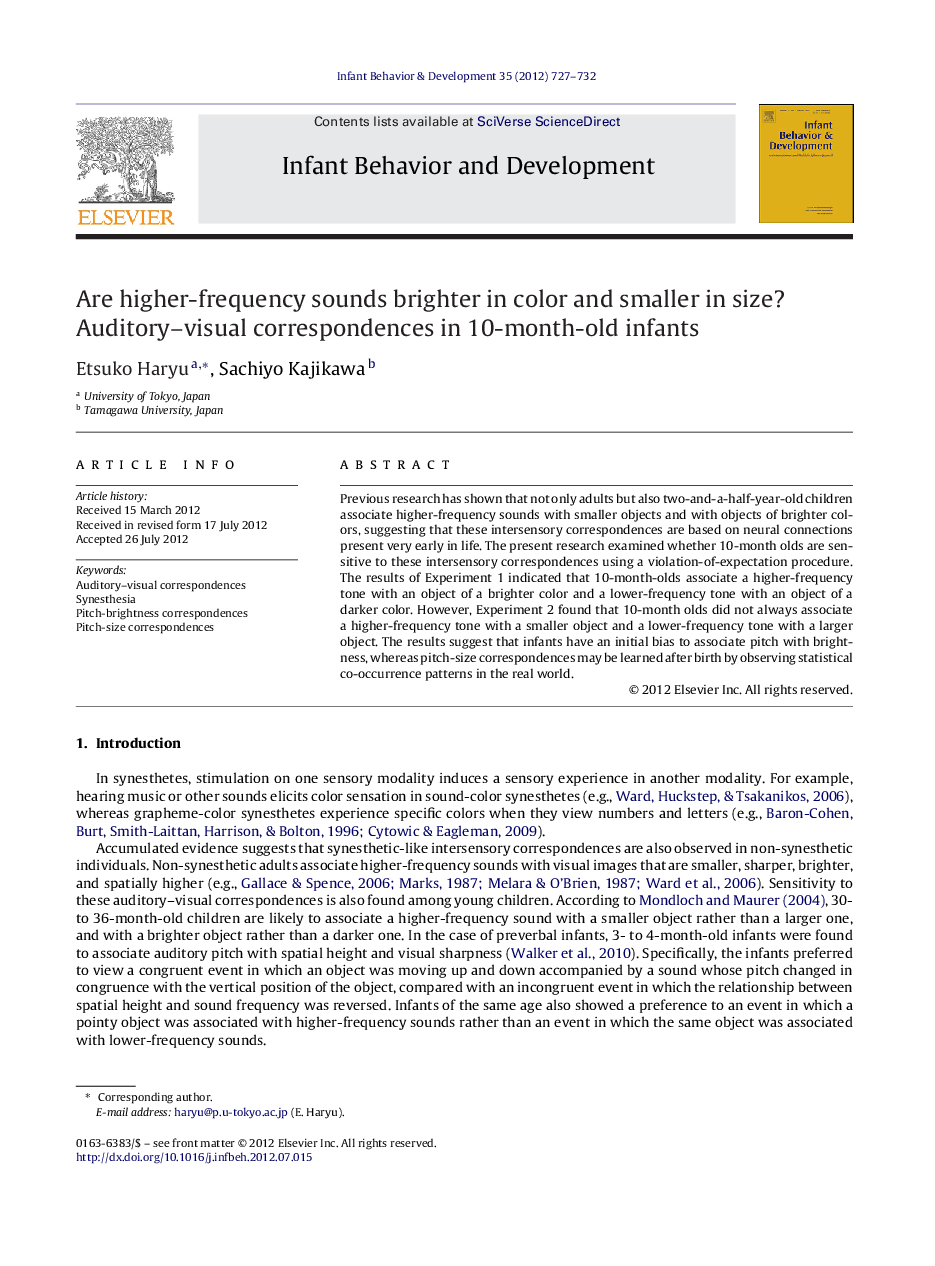| Article ID | Journal | Published Year | Pages | File Type |
|---|---|---|---|---|
| 917358 | Infant Behavior and Development | 2012 | 6 Pages |
Previous research has shown that not only adults but also two-and-a-half-year-old children associate higher-frequency sounds with smaller objects and with objects of brighter colors, suggesting that these intersensory correspondences are based on neural connections present very early in life. The present research examined whether 10-month olds are sensitive to these intersensory correspondences using a violation-of-expectation procedure. The results of Experiment 1 indicated that 10-month-olds associate a higher-frequency tone with an object of a brighter color and a lower-frequency tone with an object of a darker color. However, Experiment 2 found that 10-month olds did not always associate a higher-frequency tone with a smaller object and a lower-frequency tone with a larger object. The results suggest that infants have an initial bias to associate pitch with brightness, whereas pitch-size correspondences may be learned after birth by observing statistical co-occurrence patterns in the real world.
► Synesthetic-like intersensory correspondences were examined in 10-month-old infants. ► Ten-month-olds associate pitch with surface brightness. ► Ten-month olds are not sensitive to pitch-size correspondences.
